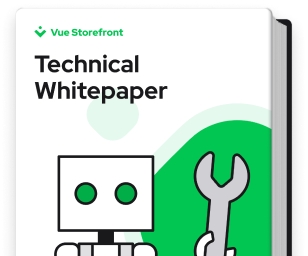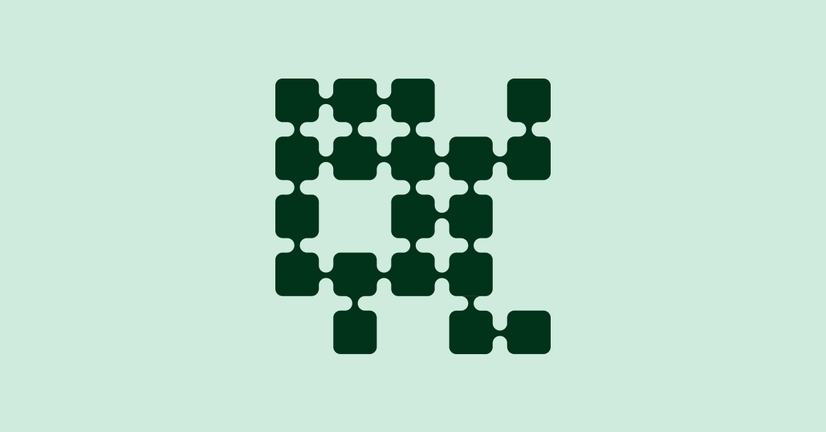Explore by Category:
Headless Commerce
B2B Headless Commerce: Benefits & Challenges
When someone “loses their head”, it suggests chaos and panic. However, “headless commerce” is the latest trend in the eCommerce industry. It is the go-to option for B2B businesses that want to deliver fast and smooth shopping experiences to their customers while maximizing sales and revenue.
By using a headless commerce architecture , businesses can go beyond the traditional limits of a storefront and create solutions that fit their needs. This article will provide an overview of what headless commerce is, how it works, and the potential benefits it offers businesses operating in the B2B space.
What is B2B Headless Commerce?
B2B headless commerce is a type of eCommerce solution that allows business-to-business (B2B) companies to create and manage online stores without being tied to an all-in-one legacy solution.
Unlike traditional eCommerce solutions, which are built around a single monolith application , headless commerce allows B2B eCommerce companies to separate the frontend and backend layer of their website to improve web performance, scalability and flexibility.
Furthermore, the API approach allows them to choose best-of-breed technologies to compose their stack out of solutions which meet their business needs.
Exchanging all-in-one commerce platforms with decoupled architecture results in improved customer experience, increased conversions and sales.
Benefits of headless commerce for B2B
Headless commerce offers numerous advantages for B2B companies. These include:
1. Freed marketing teams: Headless commerce architecture lets B2B eCommerce companies work on their customer experiences in ways that aren't possible with traditional eCommerce solutions. Thanks to the decoupled architecture, marketing teams get the freedom to update, test and change the presentation layer without developer’s help, which makes the process both smoother and cheaper.
2. Scalability: Headless technology allows for easy, unlimited scaling. You can expand your store to enter new markets or introduce new product niches without restraints of a coupled legacy software architecture. This is particularly important for B2B companies which operate on multiple markets and want to deliver smooth experiences across multiple channels.
3. Cost savings: Building an eCommerce stack with headless solutions can take less time than with full-stack solutions, which automatically cuts development costs. Additionally, headless commerce websites require fewer licensing and hosting fees than legacy software, as you are using only those features which are needed. To put it simply, headless technology can save costs during development, launch, and hosting. If you want to learn more, read the article on headless commerce costs .
4. Solid CMS: Headless CMS allows you to store and organize content independently from your eCommerce platform. Headless refers to an accessible content management system interface that delivers content via a RESTful API or GraphQL API on any device. It takes a new approach to the market, focusing on connecting third-party applications rather than forming a monolithic instance. A solid headless CMS can be invaluable to B2B eCommerce businesses which are freed to quickly publish, change and manage content across multiple channels.
Read more about the benefits of headless commerce .
How to implement a B2B headless commerce strategy
There are two ways to implement a headless commerce strategy:
Full replatforming, which requires exchanging the entire commerce platform to a new headless commerce stack.
Frontend-first migration, where you add a decoupled frontend on top of your existing eCommerce platform.
Let’s discuss each method separately.
Full replatforming
The process of full replatforming usually happens when a store outgrows its eCommerce system’s capabilities, or the existing software is no longer supported.
It assumes the assembling and the implementation of an entirely new headless stack all at once (frontend, headless CMS, headless commerce platform , and more).
When you decide to run the full replatforming, you need to be prepared that this is a more complex, time-consuming and expensive approach to headless commerce implementation as it requires exchanging the entire tech stack at the same time.
However, as always, there is an option B.
Frontend-first migration
Gradual implementation of a headless commerce strategy is the best choice for companies which don’t want to resign from their existing software but still want to enjoy the benefits of headless technology.
A frontend-first approach is a less complex, usually way faster, and more cost-effective method for companies which prioritize fast page loads and superb customer experience.
As a fast-track approach to headless commerce architecture, it begins with adding a decoupled frontend on top of the current commerce platform, without changing the backend core of the eCommerce system.
The process of frontend-first migration to headless architecture takes the following steps:
Adding a new performant frontend, like Alokai, to your existing software suite like SAP Commerce Cloud , Elastic Path or BigCommerce
Testing the integration before going live
When it’s ready and the company metrics have improved, you can systematically add other headless components or replatform at your own pace.
Find a detailed instruction on how to go headless in a separate article.
What do you need to implement a headless strategy for your B2B eCommerce?
If you have already decided that a headless commerce strategy is the best choice for your business to grow the number of online purchases, the next step is to decide how to implement it. The road forward – which involves planning, choosing an architecture, tooling, and more – could be the difference between a roaring success or a dismal failure.
B2B companies need to have the right tools and resources in place in order for headless commerce to work with success. Here are the key components that are needed:
1. Technology Vendors (TV)
B2B companies need to partner with the right technology vendors to provide the necessary components for their headless commerce stack. This includes finding the right Frontend as a Service , headless commerce platform, headless CMS, payment gateway, analytics services, and more, depending on the business needs.
Technology vendors have a deep understanding of not only the eCommerce industry, but also of the technology that drives it. They can provide insights and advice that a business may not have access to.
2. Solution Integrator (SI)
B2B companies need to find the right Solution Integrator (agency) to help them design, build, and maintain their headless commerce stack. This includes finding an experienced team that understands the unique needs of B2B companies and the technicalities of composable commerce .
Solution Integrators have the knowledge and expertise to ensure a successful headless commerce strategy. They can provide valuable insights into the best technology stack and are able to optimize the system for maximum efficiency.
3. In-house Team
B2B companies need to have an in-house developer team dedicated to managing their headless commerce solution. An in-house team gives the business more control over the whole process, managing the development of a headless commerce stack according to the business needs.
A B2B business can either decide to outsource the entire headless commerce implementation to a Solution Integrator, or handle this project in-house. A team that has a holistic knowledge of the company, its offering and products, is usually more flexible and scalable, allowing for more customization and faster development.
What are the challenges of headless commerce?
While headless commerce has much to offer online businesses with dozens of benefits, it is not always easy to put into place. Here are some key hurdles:
Complex implementation: Headless solutions can pose challenges during implementation due to the complexities of integrating various systems and the need to maintain a secure, reliable, and compliant environment. Other problems include the need to integrate with third-party services, customize the user interface, and set up the backend services.
Complex customization: Headless commerce solutions are highly customizable, so there is no standardization between different implementations. This can make it hard for B2B companies to make sure their solutions work with other technologies and systems.
Security: Headless solutions can be vulnerable to security risks since they are not built on a single platform. B2B companies need to take the necessary steps to ensure that their solutions are secure.
Take the first step towards headless architecture with Alokai Frontend as a Service
Regardless of which approach to headless commerce implementation you choose, be it a full-replatforming or a frontend-first path, Alokai is the best starting point for your migration.
Alokai is a Frontend as a Service that delivers custom storefronts at the fraction of cost and time, and with lightning-fast page loads to achieve better conversion rates and higher revenue.
Why should you start your headless digital transformation with Alokai?
More than 30 out-of-the-box integrations with best-of-breed headless solutions and customizable templates help to significantly reduce development time and expenses while providing endless customization.
Alokai’s scalable and secure cloud infrastructure helps to maintain lightning-fast speed, and great customer experience while optimizing ROI
With above 50 partnering Solution Integrators, which implement Alokai on a daily basis, you can start right away.
Download our whitepaper and learn more about Alokai capabilities
Share:
Share:
More in Headless Commerce
Frequently asked questions
Ready to dive in? Schedule a demo
Get a live, personalised demo with one of our awesome product specialists.






















